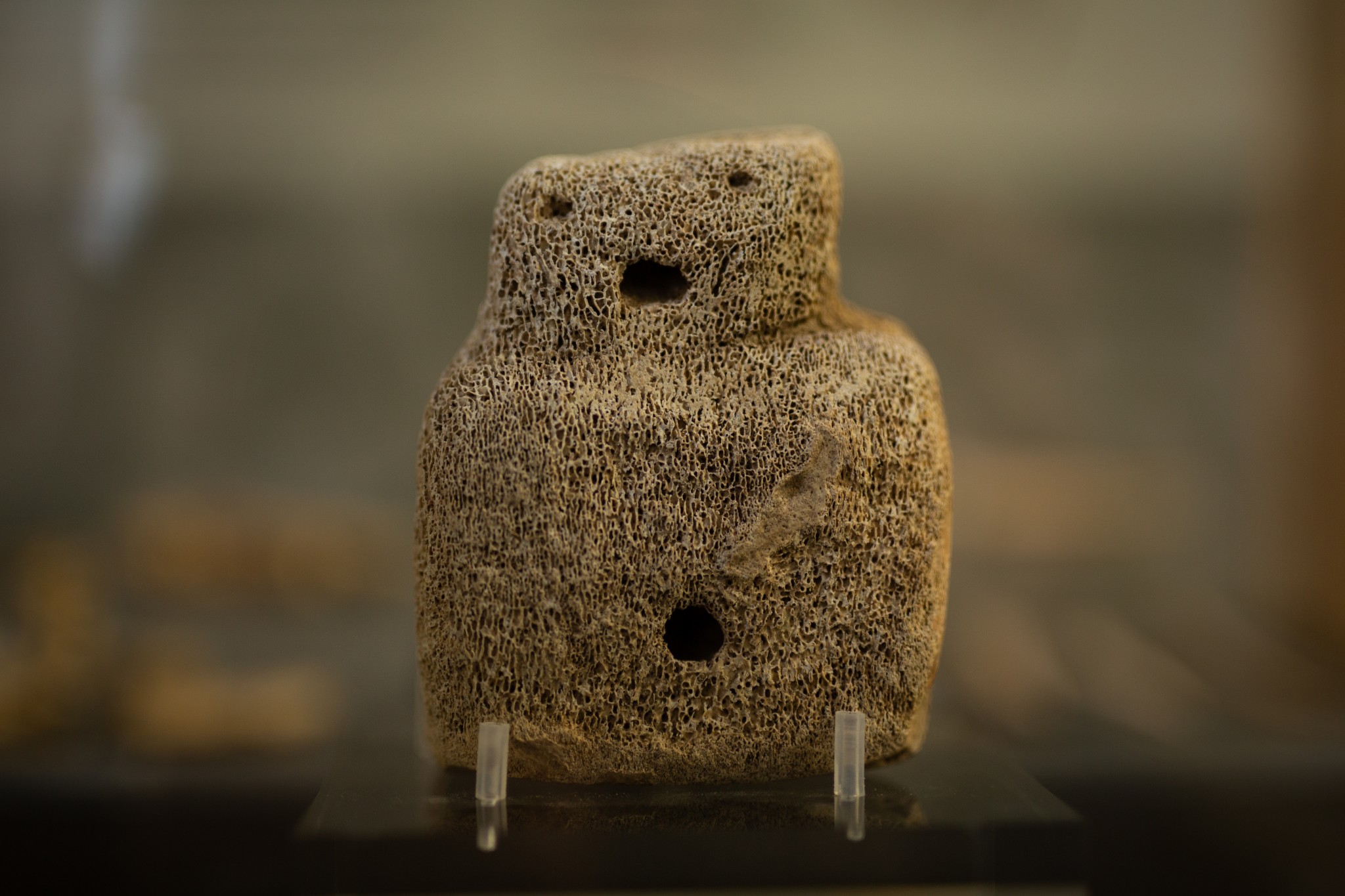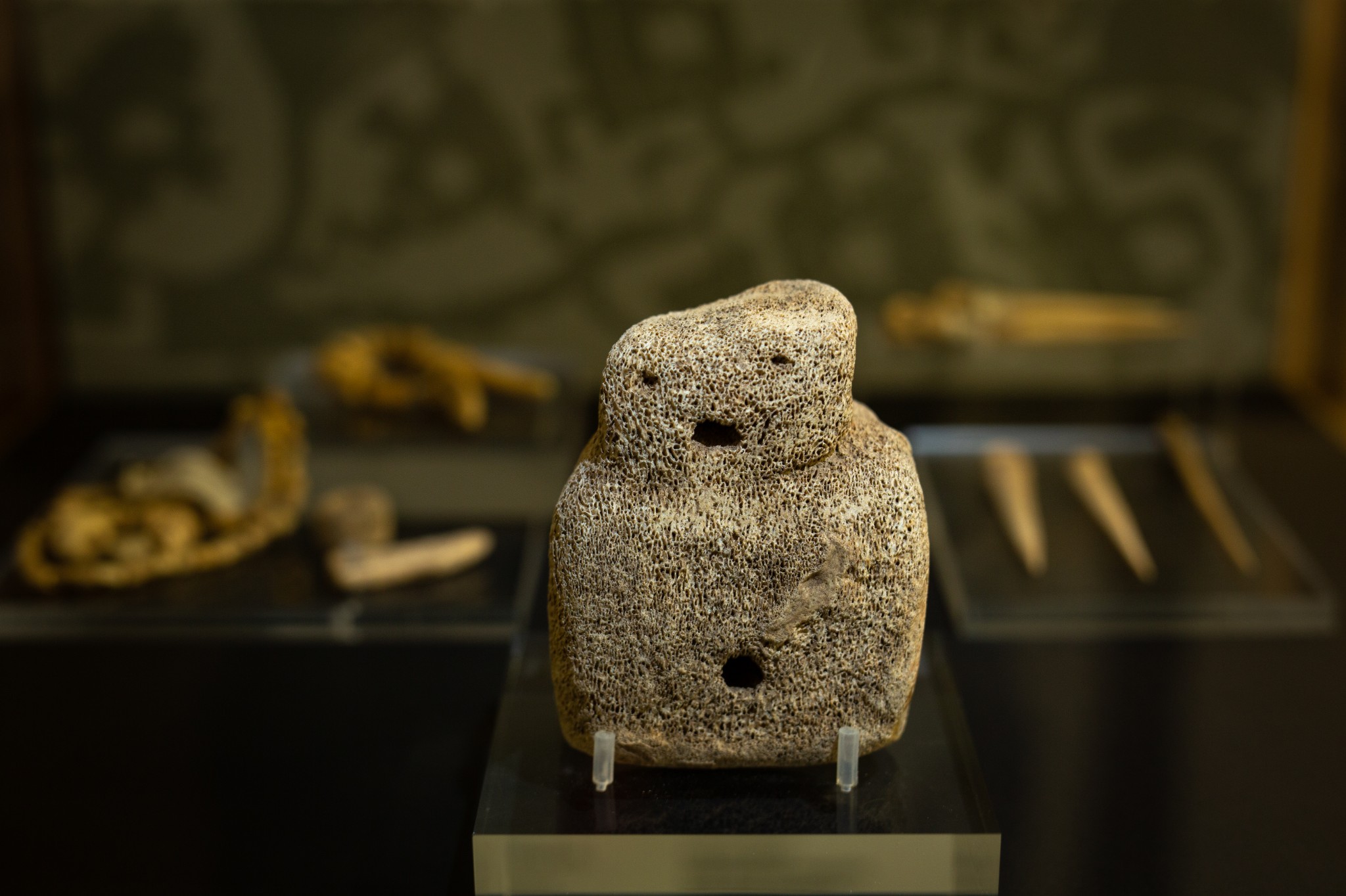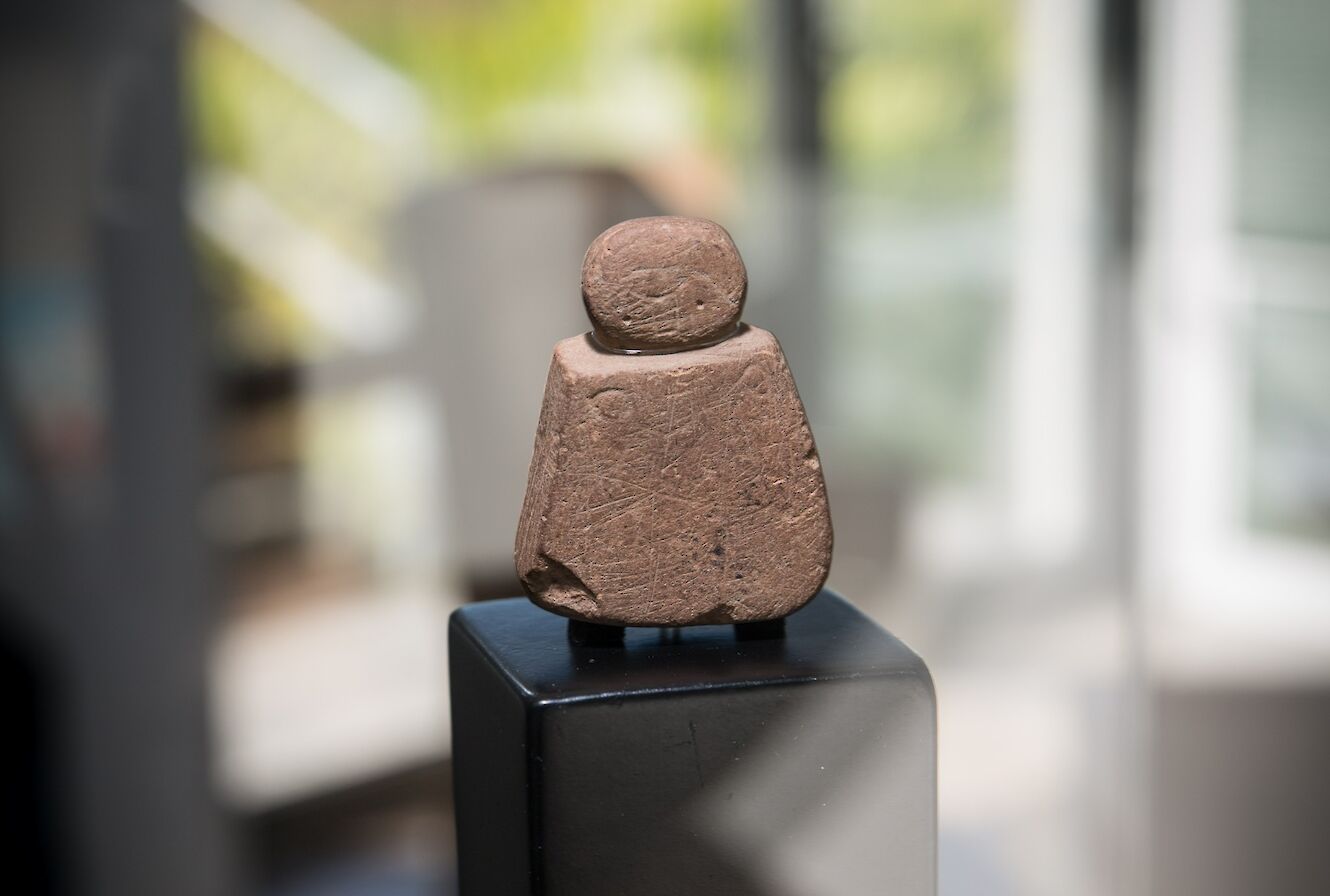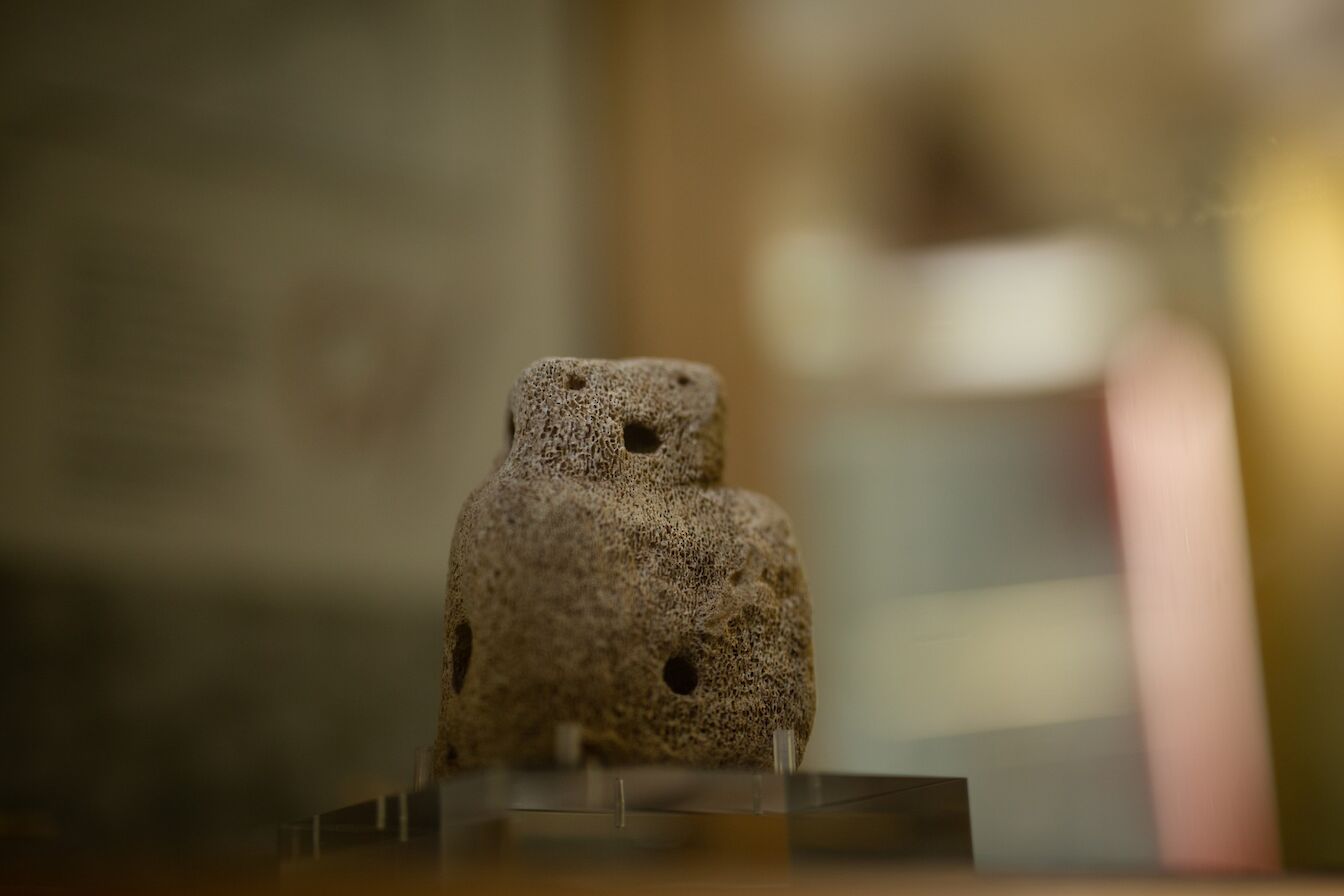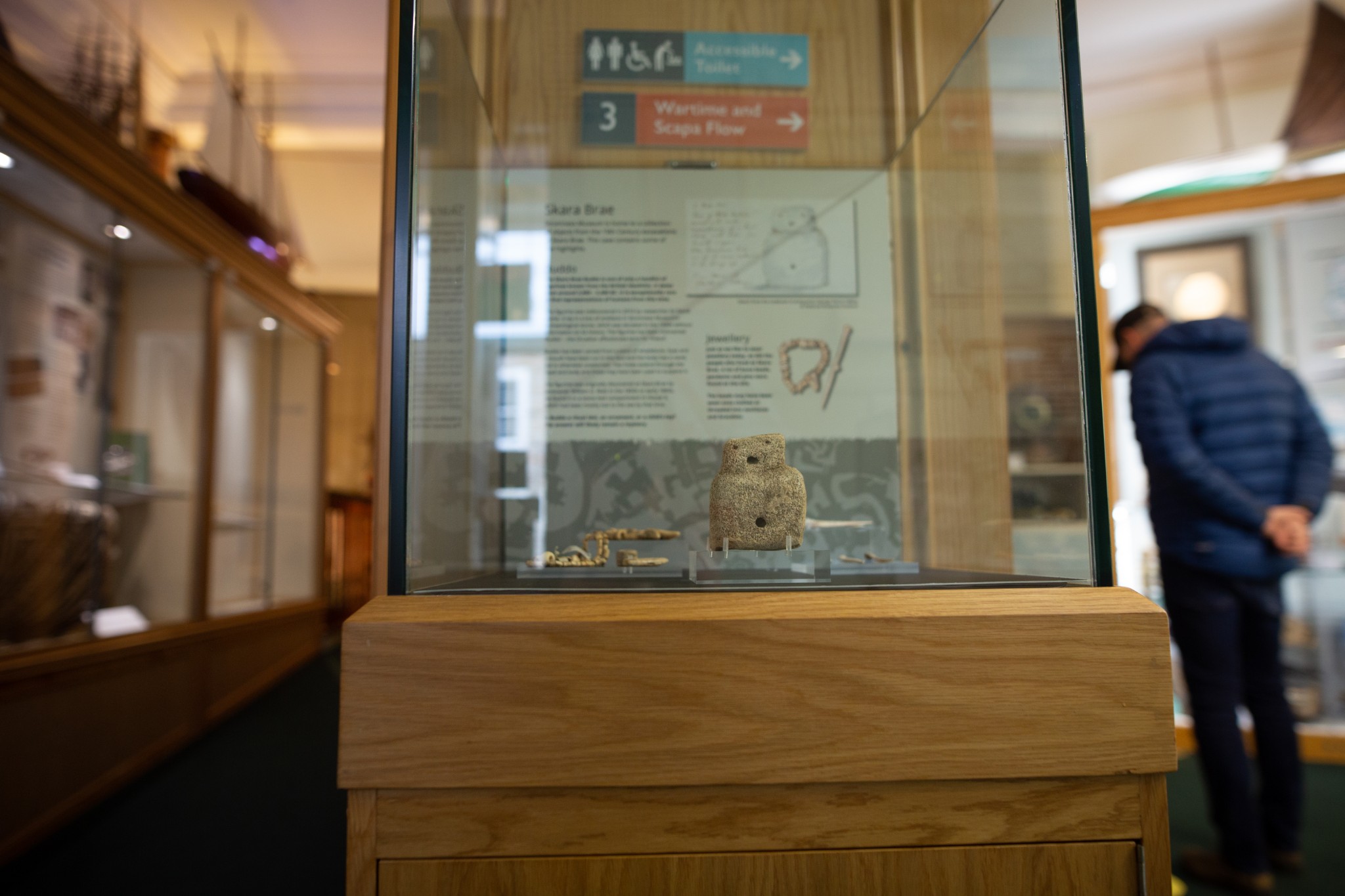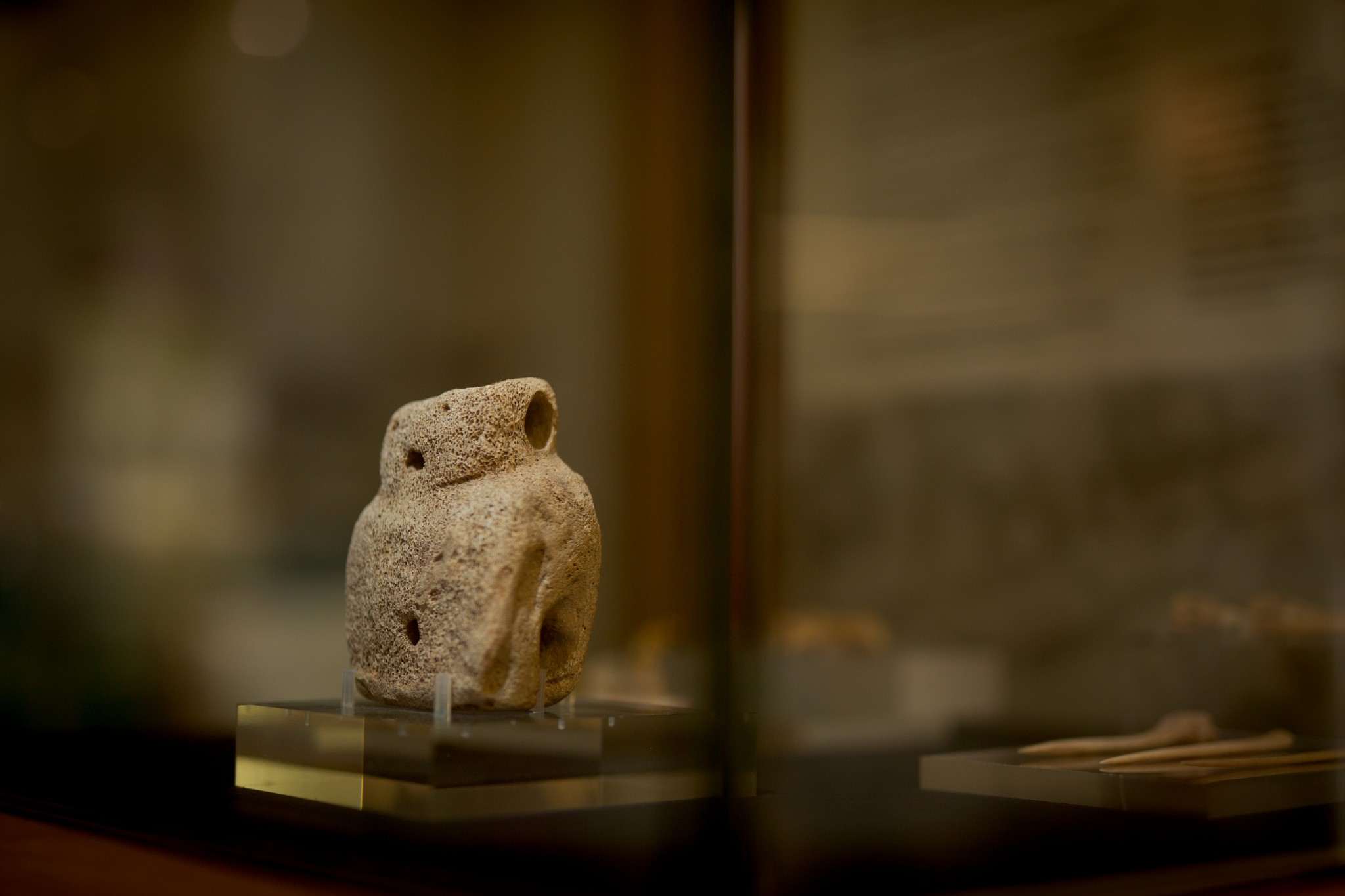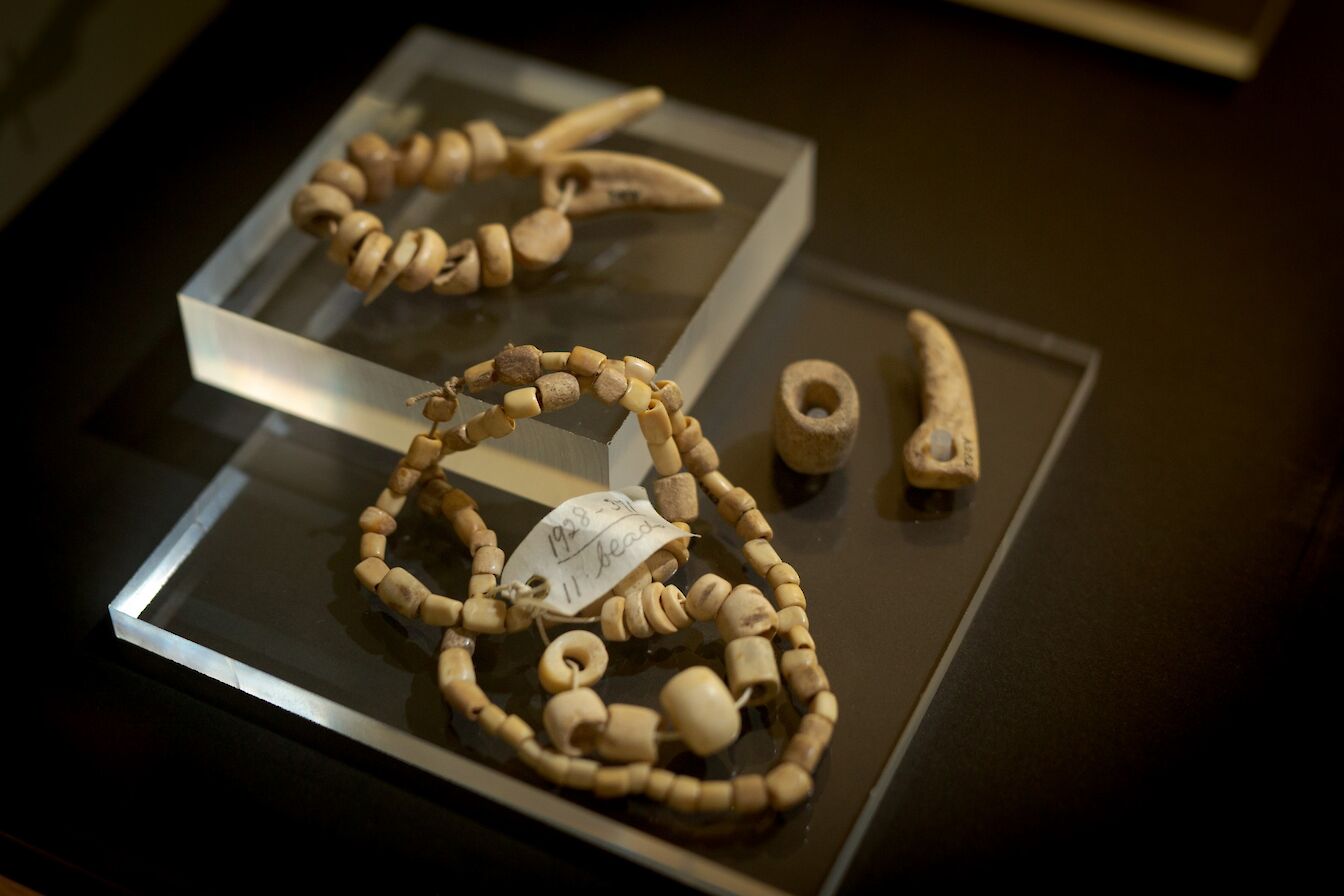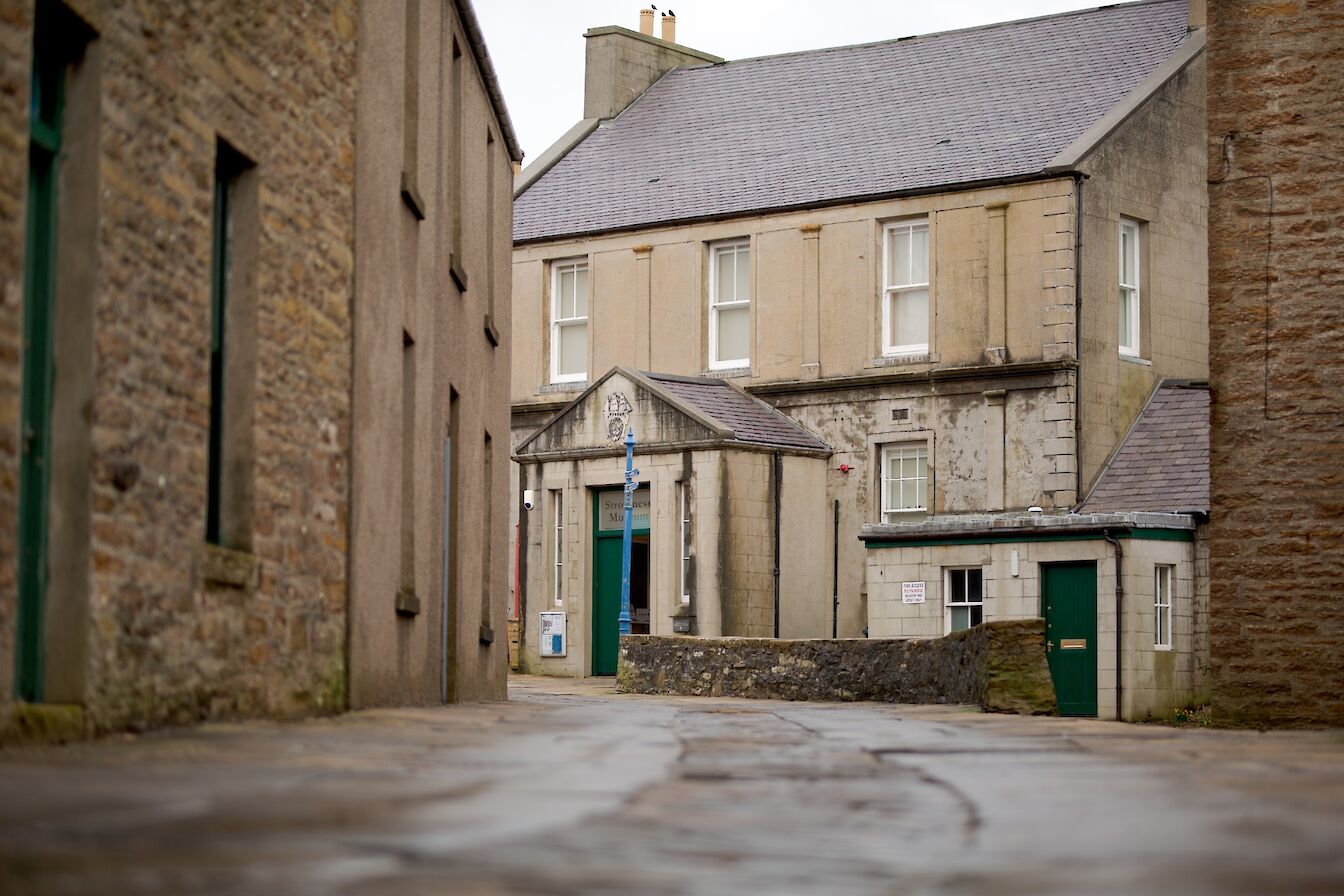“You’ll never guess what we’ve found!”
It was 2016 and the voice on the phone belonged to Janette Park, curator at the Stromness Museum. Her excitement was clear and palpable. A long-lost Neolithic figurine from Skara Brae had been rediscovered in the museum’s collections.
Missing for around 80 years, the whalebone figurine had been christened the “Skara Brae Buddo” by the museum staff. Measuring 9.5cm high and 7.5cm wide, it had no arms or legs, and what appeared to be eyes, a mouth and a navel had been cut into the 'head' and 'body'. Two large holes running through the sides hinted that it may once have been suspended.
The figurine had been recovered around 150 years previously, during the first excavations at Skara Brae.
Leading these was William Watt, resident of Skaill House, who, between 1851 and 1868, had cleared out four structures and gathered a “vast hoard of primitive relics”[i]. Although Watt’s work was carried out “with loving care and almost with his own hands”[ii], it was an excavation only in terms of the dictionary definition. Were it not for the Orcadian antiquarian George Petrie planning and recording Watt’s findings documentation would be non-existent. But Petrie’s sole mention of the figurine, in an 1867 report to the Society of Antiquaries of Scotland, read: “A small piece of whalebone, cut as if intended for an idol or ‘fetish’.”
 Before its rediscovery the only representation of the Buddo was a rough sketch in one of Petrie’s notebooks. Or so we thought. A second account of the figurine, published in 1889, has more recently come to light.
Before its rediscovery the only representation of the Buddo was a rough sketch in one of Petrie’s notebooks. Or so we thought. A second account of the figurine, published in 1889, has more recently come to light.
Written by Rev S. M. Mayhew, and accompanied by an illustration (right), it described the Skara Brae figurine as “a ‘fetish’; the upper part of a human body, in whalebone…”[iii]
In the majority of antiquarian forays into Orcadian archaeological sites, artefacts were the goal. As such these operations were not exactly renowned for their meticulous record keeping. Particularly where the excavator was not especially interested in the objects recovered.
Whatever the situation regarding the so-called “fetish”, we know it vanished. It now seems it was passed to the National Museum of Antiquities, in Edinburgh, before being returned to Orkney in the 1920s. But for decades its location was a mystery and the Buddo was presumed lost – a loss that was particularly felt with the discovery of the 'Westray Wife' figurine at the Links of Noltland, Westray, in 2009.
Although similar in style to the Skara Brae artefact, the Westray figurine was smaller, flat, and carved from sandstone. But detailed comparisons were difficult when all you had to go on was a sketch (or two).
There seemed little doubt that the Petrie’s so-called 'fetish' was gone. All but the most optimistic had to admit that it wouldn’t see the light of day again. How wrong they were!
In April 2016, Dr David Clarke – who had excavated at Skara Brae in the 1970s – was carrying out research on the settlement at the Stromness Museum. In preparation for a book on Skara Brae, he was investigating objects donated to the museum by Skaill House in the 1930s. The artefacts were without provenance – their origins had not been recorded – so Dr Clarke was working through storage boxes in the museum store. It was there he made a startling discovery.
After hour upon hour of carefully unwrapping and examining the individual donations he came face-to-face with a long-lost, whalebone figurine.
“Amazingly, we found it in the last box of the day,” said Dr Clarke at the time. “I’ve always thought this figurine to be lost forever so seeing it staring back at me from its bed of tissue paper was completely unexpected and very exciting.”
The Buddo figurine has now taken pride of place within the museum’s other artefacts from Skara Brae. And like many other enigmatic objects from the Neolithic, perhaps the most common question asked by visitors is: “What’s it for?”
From Petrie’s choice of words – 'idol' and 'fetish' – in 1867 it is clear he believed the object had a magical or religious role, which it may well have. Equally it could have been something as simple as a child’s toy. We just don’t know.
Before 2009, a mundane purpose for the Buddo might have been easier to accept, but the Westray Wife’s discovery suggested there may be something more to the figurines.
Although the Westray Wife appears to have been deliberately deposited to mark the formal closure of a building, all we know about the Buddo is that it came from a bed recess in House Three at Skara Brae – a building that has suffered severely due to coastal erosion. This lack of information means we don’t have a date for the Buddo. Was it contemporary with occupation of Skara Brae (c3300-2900BC) or a later addition after the settlement had gone out of use?
From the front both figurines share the same shape – although the Buddo is larger, and its features differ – implying a connection of some sort.
While the Buddo is unadorned, the Westray Wife’s 'face' was incised with the same 'eyebrow' motif found on the stonework inside a Neolithic tomb, the Holm of Papay South. The same design appears on the highly ornate Folkton chalk “drums” from Yorkshire, which were deposited with a child burial.[iv]
While this is not necessarily definitive proof, this, together with the fact these figurines are not turning up in bucketloads, tends to suggest they were at least something out of the ordinary.
Whatever the Buddo represented, why not visit it for yourself? Drop in to the Stromness Museum and see what you think.
Visit the Stromness Museum website to find out how you can visit, and explore more of the artefacts and exhibitions on display.
Find out more about archaeology in Orkney, including how you can study the subject in the islands, on the official University of the Highlands and Islands Archaeology Institute website.
References
[i] Petrie, G. (1867). Notice of Ruins of Ancient Dwellings at Skara, Bay of Skaill, in the Parish of Sandwick, Orkney, recently excavated. In Proceedings of the Society of Antiquaries of Scotland (Vol. 7, pp. 201–219).
[ii] Old Lore Miscellany (1909)
[iii] S. M. Mayhew (1889) Notes on North Caithness and Orkney. Journal of the British Archaeological Association: First Series, 45:3, 265-279
[iv] At the time of writing, a fourth cylindrical artefact has been hitting the headlines. Found a few miles from Folkton, the Burton Agnes 'drum' had been deposited alongside the burial of three children. Dated to c3000-2900BC, it features decoration strikingly similar to that encountered in the Orcadian Neolithic, particularly the Ness of Brodgar.
